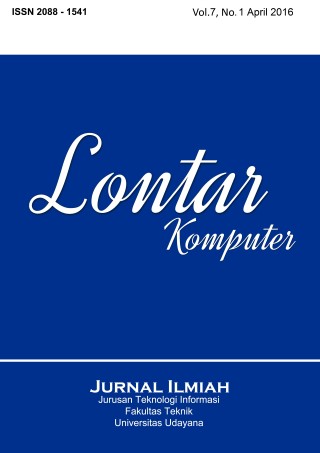Deteksi Sepsis pada Bayi Menggunakan Metode Dempster-Shafer
Abstract
Sepsis be considered health problems in infants in developing countries and industrialized countries. That is because sepsis has a mortality rate that is enough high on the infants. Lack of knowledge of parents to the sepsis causing treatment too late. This study attempted to show how the Dempster-Shafer method can be used to detect Sepsis disease in Infants. Dempster-Shafer method combines Trust Value of symptoms one by one. This method is a model uncertainty with a range of probabilities. The study used six symptoms on 5 kinds of different conditions of Trust Value from any symptoms. The trials applied using the programming language PHP and HTML. The results of Dempster-Shafer for Sepsis in Infants that Condition 1 is 0.66977, Condition 2 is 0.60435, Condition 3 is 0.69249, Condition 4 is 0.66132, and the Condition 5 is 0.76756.
Downloads
References
[2] M. Dahria, R. Silalahi, and M. Ramadhan, “Sistem Pakar Metode Damster Shafer Untuk Menentukan Jenis Gangguan Perkembangan Pada Anak,” Jurnal Ilmu Sains dan Ilmu Komputer., vol. 12, no. 1, pp. 1–10, 2013.
[3] R. S. Hotchkiss et al., “Apoptotic cell death in patients with sepsis, shock, and multiple organ dysfunction,” Crit Care Med, 1999.
[4] Kamus Kesehatan.
[5] E. G. Wahyuni and W. Prijodiprojo, “Prototype Sistem Pakar untuk Mendeteksi Tingkat Resiko Penyakit Jantung Koroner dengan Metode DempsterShafer (Studi Kasus: RS. PKU Muhammadiyah Yogyakarta),” IJCCS, vol. 7, no. 2, pp. 133–144, 2013.
[6] E. Setyarini, D. Putra, and A. Purnawan, “The Analysis of Comparison of Expert System of Diagnosing Dog Disease by Certainty Factor Method and Dempster-Shafer Method,” International Journal of Computer Science, vol. 10, no. 1, pp. 576–584, 2013.
Keywords
The Authors submitting a manuscript do so on the understanding that if accepted for publication, the copyright of the article shall be assigned to Jurnal Lontar Komputer as the publisher of the journal. Copyright encompasses exclusive rights to reproduce and deliver the article in all forms and media, as well as translations. The reproduction of any part of this journal (printed or online) will be allowed only with written permission from Jurnal Lontar Komputer. The Editorial Board of Jurnal Lontar Komputer makes every effort to ensure that no wrong or misleading data, opinions, or statements be published in the journal.
 This work is licensed under a Creative Commons Attribution 4.0 International License.
This work is licensed under a Creative Commons Attribution 4.0 International License.























